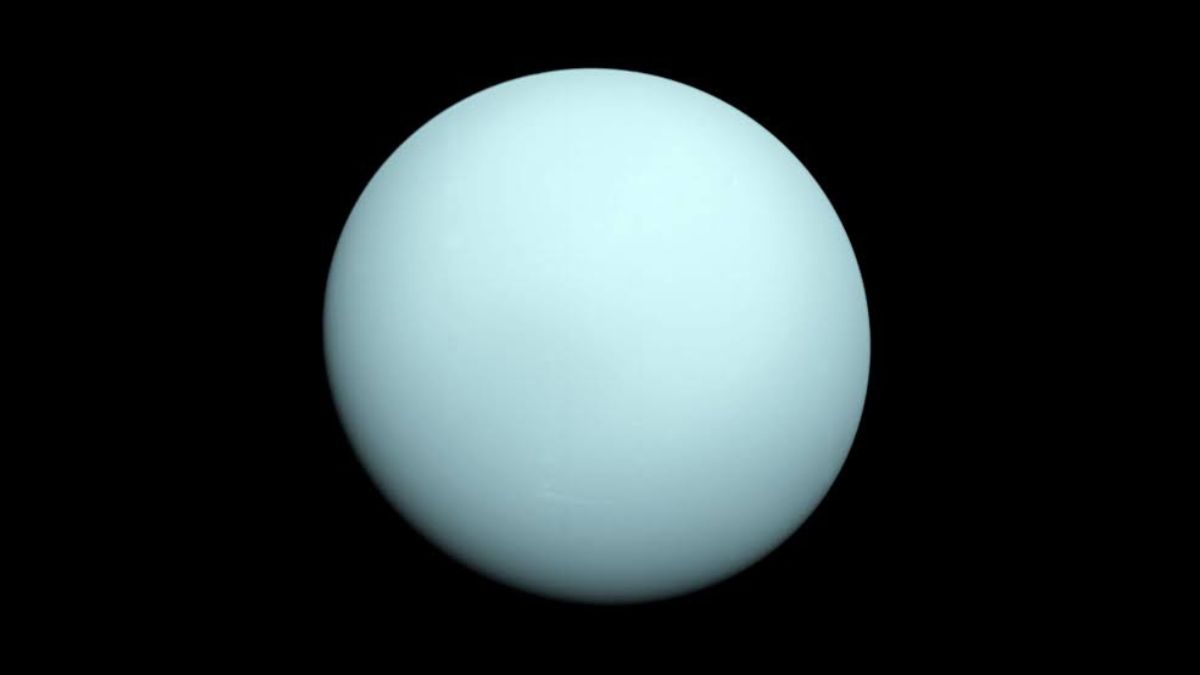JAKARTA Apart from being the coldest planet, Uranus is also often referred to as the strangest planet in the solar system. This mention arises because of many things, one of which is because of the extreme level of Uranus slope.
Most planets have a rotation axis that is perpendicular to their orbital plane, while Uranus has a tilt angle of up to 98 degrees. No one knows the cause, but scientists suspect that Uranus had a collision.
Since hundreds of years ago, citing Sciencealert, astronomers have known that Uranus is a very cold planet, even referred to as an icy planet. The upper atmosphere of Uranus, known as the thermosphere-corona, also has a temperature of minus more than 500 degrees Celsius.
Uranus' strangeness list also increased due to his reduced atmospheric temperature. In 1986, a spacecraft called Voyager 2 flew across Uranus. The telescope measures the temperature on the planet for decades.
From the results of Voyager 2's measurements, it was revealed that Uranus' upper atmosphere became colder as its temperature decreased by half. Uranus became the only planet to experience a change in temperature like this in the solar system. Of course this change is confusing.
For several years, many scientists were interested in this change until a new study emerged with the title Solar Winds possibly Regulating the temperature of the Uranus Thermosphere. This study was carried out by a group of scientists from Imperial College.
According to Adam Masters, one of the researchers, Uranus' cooling was due to the solar wind, a particle flow from the outer parts of the sun consisting of electrons and protons. Most likely, the solar wind affects changes in Uranus' atmosphere.
"The apparently very strong control of Uranus' upper atmosphere by the solar wind is unlike anything we've seen on any other planet in our Solar System," Adams said.
SEE ALSO:
The sun changes the temperature of the Earth and Uranus in different ways. Since decades ago, scientists have realized that Uranus is not controlled by photons. This may be due to the distance between Uranus and the Sun that is not so close.
The Earth with the Sun has a distance of 228 million kilometers, while Uranus and Matahari are nearly 3 billion kilometers away. The number of photons from the Sun is believed to be unable to reach Uranus, making it difficult for the planet to heat up.
That way, the closer a planet gets to the Sun, thermosphere temperature of the planet will be controlled by photons. Meanwhile, the further the planet is from the Sun, the temperature will be influenced by the solar wind.
"The decline in the kinetic power of the solar wind, or which is almost identical to the total solar wind power, should mean a weakening of the Uranus thermosphere heating, leading to a decrease in the observed long-term temperature," the researchers wrote in their report.
The English, Chinese, Japanese, Arabic, and French versions are automatically generated by the AI. So there may still be inaccuracies in translating, please always see Indonesian as our main language. (system supported by DigitalSiber.id)


















